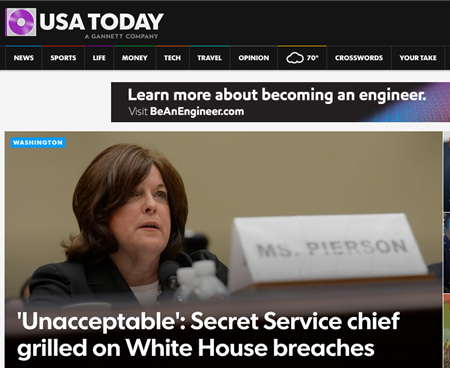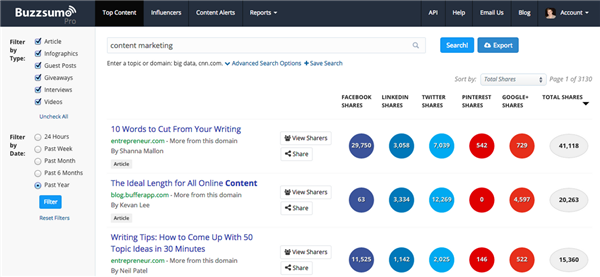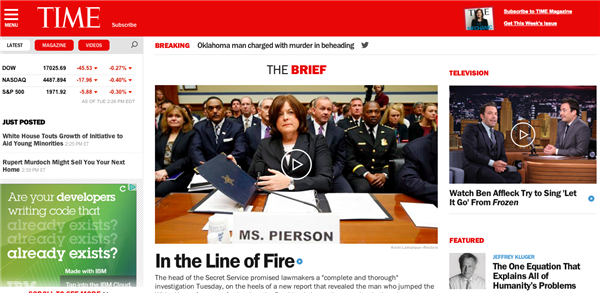Content marketing is a process, but one part that doesn’t always get the attention it deserves is planning. Perhaps it seems too challenging or dull, but make no mistake: A good plan is essential to good content marketing.
Putting together a content plan is not simple, but it needn’t be a roadblock either.
We asked content planning veterans to share their tips. Read on to see what Pam Didner, author of “Global Content Marketing”; Sarah Begley, Digital Operations Editor at TIME; Ross Beard, a marketing specialist and Ben Rand, Manager of Content Marketing at Xerox Corp. had to say.
1) First, Know Your Audience
Understanding who you want to reach is a critical part of content marketing generally, but having that definition in mind will go a long way toward shaping your content plan too.

“I look to really understand the audience first so that we ensure writing to their specific needs and make sure it’s useful to them. When it comes to developing a calendar, we make sure we know who we’re talking to, even talking directly to customers. The best place to start, if you’re new, is to understand what will be useful to them. For example, if your product or service helps companies improve client satisfaction, then your customers will likely enjoy reading about ideas, strategies and examples relating to client satisfaction.” — Ross Beard
2) Where to Find Inspiration
You don’t have to pull stories out of nowhere, you have lots of options to help guide your content calendar as you put it together. In fact, going it alone is the worst option.
“There are four main sources for an editorial calendar. One is the AP calendar, which offers an exhaustive list of major events. Second is anniversaries. For this, it’s useful to look up important events and cultural releases that happened 10, 25, and 50 years ago. Third is to look to your publication’s franchises, the things they do every year around a certain time. For us, that means Person of the Year, TIME 100, and so on. And last is to talk to your section editors to see what they’re aware of and planning to cover on their beats.” — Sarah Begley
“Once you put the guardrail in place, you have to connect the unrelated dots. For example, I just wrote a blog about Jason A. Miller, LinkedIn’s global content marketing manager, who used his out-of-office reply as an impromptu content syndication channel. I sent Jason an e-mail and his out-of-office reply was so unique I decided to write a short blog about it. Reading, talking to your peers and colleagues, even doing yoga helps me to come up with content ideas.” — Pam Didner

“I use tools mainly around what people are currently searching for, if they’re already searching for it, you know there is a genuine need. For ideas I use Google, including what Google is recommending, keyword tools and sites like BuzzSumo. I combine those and try to understand what people want based on useful information.” — Ross Beard
“The Real Business team functions like a newsroom. Each week, we sit down with a team of journalists from our partners at Group SJR for an editorial meeting to discuss story ideas. Based on the topics we agree upon, the journalists will conduct original reporting, interviewing industry influencers as well as Xerox experts. We focus on stories that are interesting and informative and that educate our audiences.
Decisions are made and plans formed during our editorial meetings with the journalists from Group SJR. In between, we’re in regular contact via phone and e-mail, discussing content and presentation ideas, as well as upcoming events. We’re ready to react and respond as news dictates. The process has yielded some very interesting content — articles about driverless vehicles, detecting high-occupancy vehicle land “cheats,” virtual customer service agents and the future of the Internet of things.” — Ben Rand
3) When to Ditch the Plan
“You should make a plan before you break the plan…intelligently,” is something Rock Content’s Content Director Kim Fox is fond of saying. And both sides of the equation are important: having a plan and the ability to deviate from it.
“I love this quote from Jennifer Baichwal, a documentary filmmaker: ‘Have a plan, but be ready to abandon it at any moment.’ I have an editorial plan, but I go with the flow and switch the content, when it makes sense for my audiences, unexpected events and special occasions.” — Pam Didner

“I try to stay away from getting too structured. If you can be more agile, you can be more useful. If something came up on, say, the 10th of November and you can’t react, you miss an opportunity. If we plan too far in advance, we may miss the boat on interesting stories. You can keep a four-week rough plan, but I don’t recommend sticking to it all guns blazing.” — Ross Beard
“Good communication is important. Xerox is a global business and is learning every day from its customers. In general, our editorial plan generally goes out about two to three weeks, so shifting gears is not a huge problem. The fact that we’re in touch virtually every day helps.” — Ben Rand
4) Solving Challenges
Depending on your goals and the size of your business, you’ll face some challenges when content planning. But finding the right tools can help you effectively address those challenges.
“One of the biggest challenges is getting an accurate, holistic view of how my content is doing across all channels. I have tools to measure each social media channel’s performance, but there is no way to tell how I am doing overall. Maybe that’s the judgment and feedback I have to give myself based on all the data collected from different sources. My sales leads usually don’t come from paid and social media engagements, which make it even harder to quantify the performance of online promotions. With all this being said, I continue to focus on my online presence and the quality of content I create.” — Pam Didner
“As we move into our second year, the Real Business team is focusing on gaining a more complete understanding of our audience and they relate to Xerox and the content. Technology is useful in providing key metrics, but ultimately, this is a matter of trial and error. You can never take someone’s interest for granted. We have to be interesting and relevant every day.” — Ben Rand
“The biggest challenge I face is keeping organized and working with freelancers, contractors and other people on the team. When you start off by yourself it’s reasonably easy, but once you bring in a couple of people, that’s where technology plays an important role. I rely heavily on simple tools like Trello to stay organized. If you don’t have strict guidelines, you can lose momentum and focus, if we don’t deliver, we can risk ruining the relationship with our audience.” — Ross Beard

![[ROCK NA] [EBOOK SEO] Complete Guide](https://rockcontent.com/wp-content/uploads/2024/06/banner_Search-Engine-Optimization.png)






